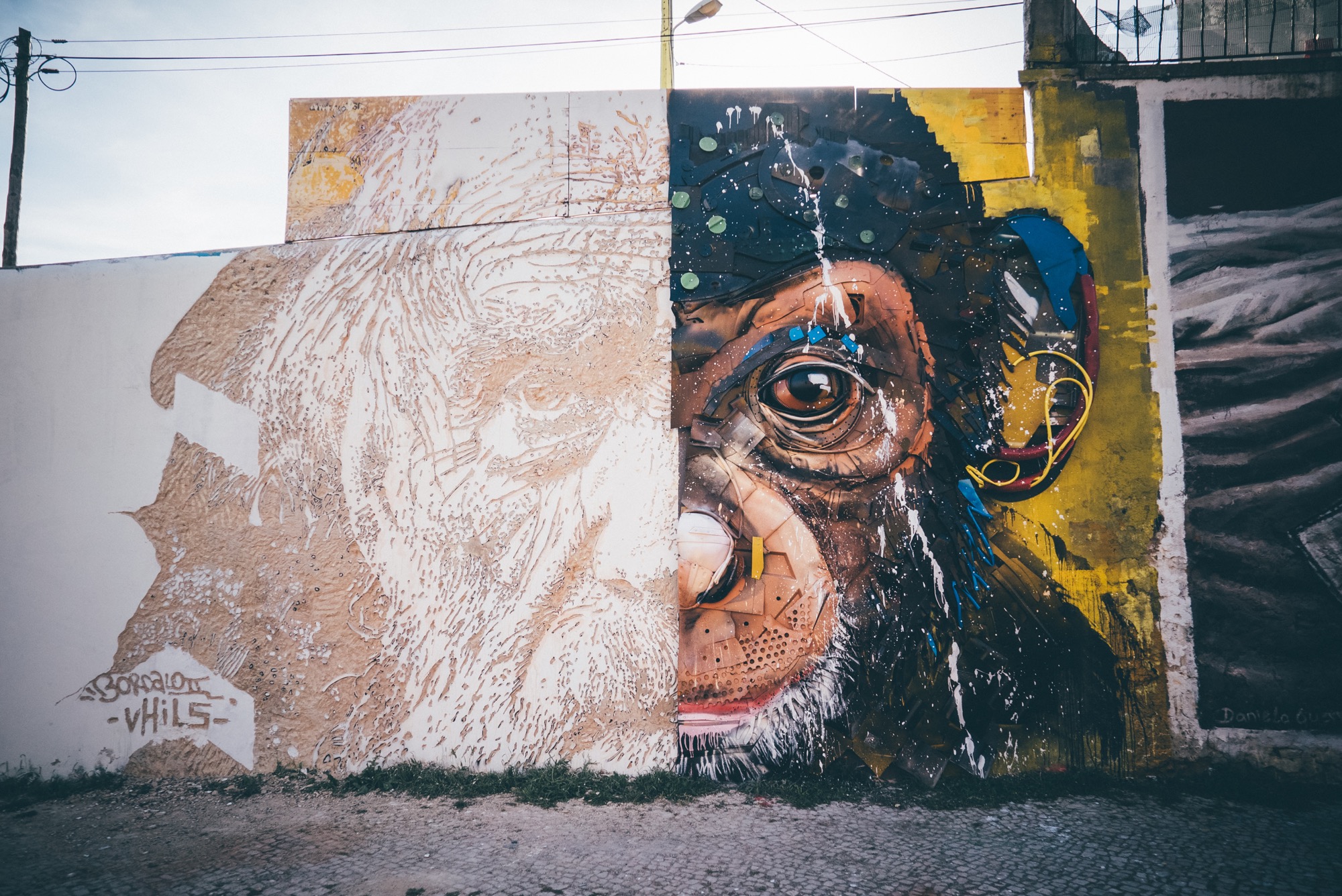This post was originally published on Colossal
Photo by Chris Costa. All images © Vhils and Bordallo II, shared with permission
Published 165 years ago, Charles Darwin’s seminal On the Origin of Species founded our modern understanding of evolutionary biology. He keenly observed wildlife in its native habitats and the similarities between animals around the world—including humans—describing how, through natural selection, populations evolve through a branching pattern over time.
Darwin is often misquoted as saying humans evolved from apes, but he actually acknowledged that humans and primates descended from a common ancestor that lived millions of years ago. With the advent of DNA testing in the late 20th century, scientists have determined that humans and chimpanzees share a staggering 98.8 percent sequence identity. Yet with a single human cell containing roughly three billion bits of information called base pairs, a 1.2 percent difference means there are about 35 million ways we can still be different.
Artists Vhils (previously) and Bordalo II (previously) recently teamed up for a collaborative mural titled “Origin,” celebrating the renowned 19th-century scientist as part of Cor de Chelas Festival in Lisbon. On the left side, Vhils carved Darwin’s likeness from the material of the wall itself, while Bordalo II constructed the face of a chimpanzee from found scraps of plastic, rubber, and other materials fastened with screws. Together, the man and our close relative align in a single, unified presence as a reminder that we are inextricably linked.
“Origin” also led to a limited-edition print, titled “Evolution,” which the artists augmented with original marks. A new edition of the print is tentatively scheduled for early next year. Find more on Vhils’ Instagram, as well as Bordalo II’s account.






Do stories and artists like this matter to you? Become a Colossal Member today and support independent arts publishing for as little as $5 per month. The article A Collaborative Mural by Vhils and Bordalo II Celebrates the Legacy of Charles Darwin appeared first on Colossal.





0 Comments